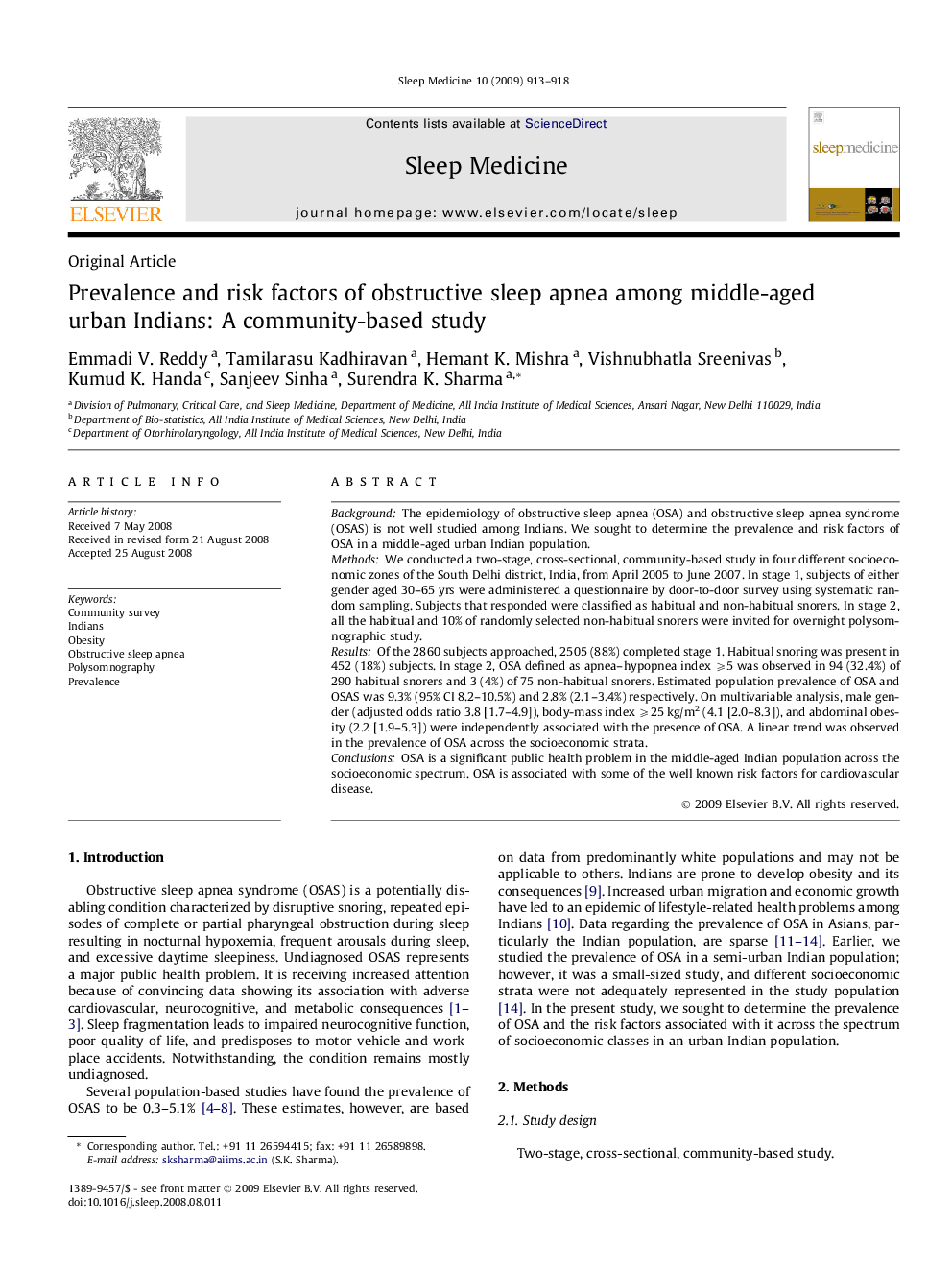| Article ID | Journal | Published Year | Pages | File Type |
|---|---|---|---|---|
| 3176796 | Sleep Medicine | 2009 | 6 Pages |
BackgroundThe epidemiology of obstructive sleep apnea (OSA) and obstructive sleep apnea syndrome (OSAS) is not well studied among Indians. We sought to determine the prevalence and risk factors of OSA in a middle-aged urban Indian population.MethodsWe conducted a two-stage, cross-sectional, community-based study in four different socioeconomic zones of the South Delhi district, India, from April 2005 to June 2007. In stage 1, subjects of either gender aged 30–65 yrs were administered a questionnaire by door-to-door survey using systematic random sampling. Subjects that responded were classified as habitual and non-habitual snorers. In stage 2, all the habitual and 10% of randomly selected non-habitual snorers were invited for overnight polysomnographic study.ResultsOf the 2860 subjects approached, 2505 (88%) completed stage 1. Habitual snoring was present in 452 (18%) subjects. In stage 2, OSA defined as apnea–hypopnea index ⩾5 was observed in 94 (32.4%) of 290 habitual snorers and 3 (4%) of 75 non-habitual snorers. Estimated population prevalence of OSA and OSAS was 9.3% (95% CI 8.2–10.5%) and 2.8% (2.1–3.4%) respectively. On multivariable analysis, male gender (adjusted odds ratio 3.8 [1.7–4.9]), body-mass index ⩾25 kg/m2 (4.1 [2.0–8.3]), and abdominal obesity (2.2 [1.9–5.3]) were independently associated with the presence of OSA. A linear trend was observed in the prevalence of OSA across the socioeconomic strata.ConclusionsOSA is a significant public health problem in the middle-aged Indian population across the socioeconomic spectrum. OSA is associated with some of the well known risk factors for cardiovascular disease.
